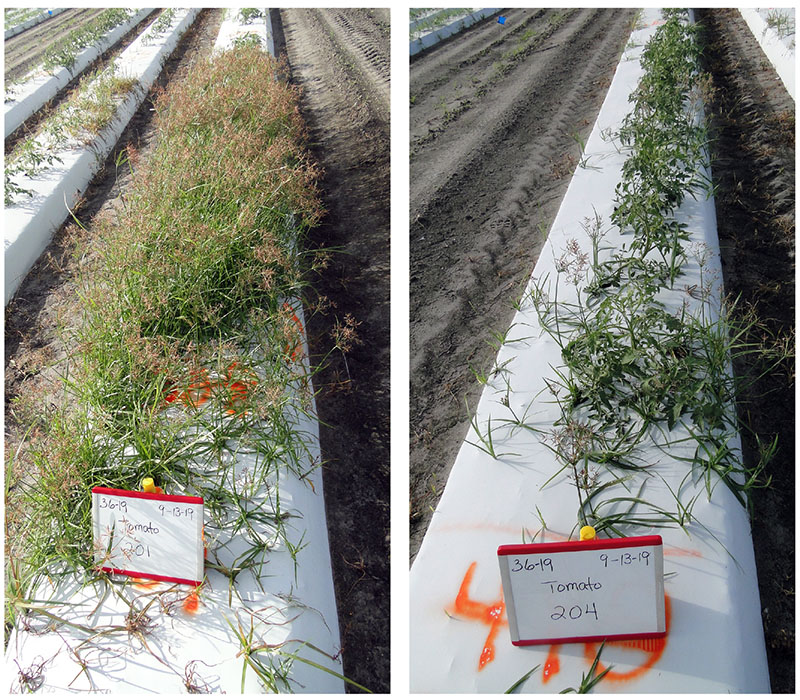
By Nathan Boyd
Weed management programs for plasticulture tomato production in the southeastern United States typically rely on an array of tools to achieve satisfactory weed control. This may include tools such as fumigants, plastic mulches, pre-emergence herbicides, post-emergence herbicides and hand weeding.
THE CULPRITS
Purple and yellow nutsedge can be especially problematic due to their ability to puncture the plastic mulch. Neither species tends to reduce tomato yields, except at high densities. However, if not managed, the nutsedge populations will rapidly increase and cause a host of problems, including weakening of the plastic mulch and increased labor to remove it.
Broadleaf and grass weeds cannot puncture the mulch but will emerge in the planting holes. These weeds compete directly with the crop and can significantly reduce fruit yield.
THE CONTROLS
Fumigation, especially if combined with totally impermeable film plastic mulches, can substantially reduce weed density. Combinations of chloropicrin and 1,3-dichloropropene are the most widely adopted fumigants in tomatoes. However, nutsedge control tends to be inconsistent with these fumigant combinations, and broadleaf and grass weeds are inadequately controlled. As a result, growers frequently apply pre-emergence herbicides such as metribuzin, Dual Magnum or Reflex under the plastic mulch.
Spartan FL 4F is the most recent product registered for use in tomato. It can be applied pre-emergence under the plastic mulch. There are some label restrictions based on soil type and organic matter content that should be followed. This herbicide has activity on a wide array of broadleaf weeds as well as suppression of nutsedge species. Recent trials conducted at the University of Florida Institute of Food and Agricultural Sciences (UF/IFAS) Gulf Coast Research and Education Center (GCREC) found that nutsedge control was greatest when Spartan was tank-mixed with another product such as Dual Magnum.
The use of pre-emergence herbicides can reduce nutsedge density and consequently the number of punctures in the plastic mulch, but adequate season-long control is rarely achieved. In fields where nutsedge is a persistent problem, post-emergence applications of Sandea are needed to achieve acceptable control.
The most effective weed control occurs when good fallow programs are combined with a range of management tools which may include fumigants as well as pre- and post-emergence herbicides.









